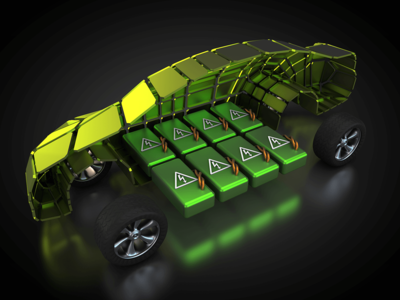BEV capacity: Why less is not always more
Special To The Auto Channel
From LMC Automotive
Article By OLIVER PETSCHENYK
POWERTRAIN ANALYST
There has been a lot of focus in recent years on battery capacity in battery electric vehicles (BEVs), primarily because it heavily influences electric driving range. This represents how much electrical energy the battery can release over an hour. Tesla has, so far, been the market leader in this respect, with the highest battery capacity available in production, at 100 kWh. This is becoming a commonly used metric to benchmark BEVs and manufacturers often hype these figures in a similar way to horsepower in internal combustion cars. Curiously, some quote the lesser known Ah (amp-hours) figure, perhaps as a means of concealing disconcertingly low capacities in kWh.
Battery degradation rises exponentially with the power and current delivered. A smaller battery operating at 100% peak load will last one-tenth the number of charge cycles compared to a larger battery operating at 50% load.
“Using the battery from 100% to 0% has a detrimental effect on battery capacity, whereas using 50% of this range (80% to 30%) is ideal for prolonging battery durability.”
A similar trait is observed when it comes to State of Charge, which refers to how much energy remains in the battery as a percentage of the total battery capacity. Tesla encourages users to keep the state of charge at around 80% when in normal use. This is due to the chemistry of a lithium battery. Using the battery from 100% to 0% has a detrimental effect on battery capacity, whereas using 50% of this range (80% to 30%) is ideal for prolonging battery durability. A lithium battery may only have 1,000 of these 50% charge cycles in it before capacity, or available State of Charge, drops below 75%. Minimising the charge cycles is, therefore, key to prolonging battery life.
An equivalent scenario applies to vehicle range; when comparing a 50 kWh battery to a 100 kWh version, the 50 kWh battery may consume 50% of its State of Charge over a 100-mile journey, versus only 25% for the 100 kWh battery. As such, the 100 kWh effective charge cycles will be reduced by almost half, exponentially prolonging the battery life and available State of Charge.
“there is a clear battery degradation advantage to a larger battery over vehicle life, which will very likely outweigh the loss of efficiency that results from the additional mass.”
In short, although larger battery capacity vehicles appear to be over-capable in terms of range for most users, there is a clear battery degradation advantage to a larger battery over vehicle life, which will very likely outweigh the loss of efficiency that results from the additional mass. Looking ahead, continual advancements in battery technology, such as graphene and solid state batteries, may one day eliminate battery degradation altogether.



